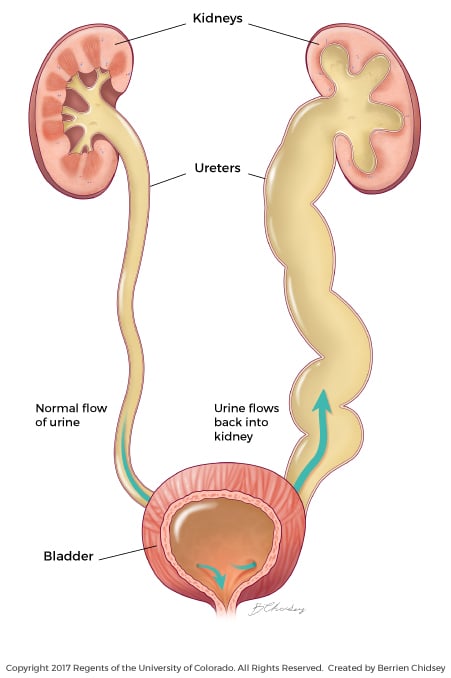- Doctors & Departments
-
Conditions & Advice
- Overview
- Conditions and Symptoms
- Symptom Checker
- Parent Resources
- The Connection Journey
- Calm A Crying Baby
- Sports Articles
- Dosage Tables
- Baby Guide
-
Your Visit
- Overview
- Prepare for Your Visit
- Your Overnight Stay
- Send a Cheer Card
- Family and Patient Resources
- Patient Cost Estimate
- Insurance and Financial Resources
- Online Bill Pay
- Medical Records
- Policies and Procedures
- We Ask Because We Care
Click to find the locations nearest youFind locations by region
See all locations -
Community
- Overview
- Addressing the Youth Mental Health Crisis
- Calendar of Events
- Child Health Advocacy
- Community Health
- Community Partners
- Corporate Relations
- Global Health
- Patient Advocacy
- Patient Stories
- Pediatric Affiliations
- Support Children’s Colorado
- Specialty Outreach Clinics
Your Support Matters
Upcoming Events
Colorado Hospitals Substance Exposed Newborn Quality Improvement Collaborative CHoSEN Conference (Hybrid)
Monday, April 29, 2024The CHoSEN Collaborative is an effort to increase consistency in...
-
Research & Innovation
- Overview
- Pediatric Clinical Trials
- Q: Pediatric Health Advances
- Discoveries and Milestones
- Training and Internships
- Academic Affiliation
- Investigator Resources
- Funding Opportunities
- Center For Innovation
- Support Our Research
- Research Areas

It starts with a Q:
For the latest cutting-edge research, innovative collaborations and remarkable discoveries in child health, read stories from across all our areas of study in Q: Advances and Answers in Pediatric Health.


Urology
Vesicoureteral Reflux (VUR)
We treat kids like they should be treated: like kids. That’s why we designed our hospital just for them.

What is vesicoureteral reflux (VUR)?
Urine normally flows from the kidneys, down through the ureters and into the bladder, where it is stored until urination occurs. The ureters normally have a one-way flap valve to prevent urine from traveling in both directions. During normal urination, the bladder muscle contracts and the sphincter muscle relaxes (this is the control mechanism), allowing the urine to leave the bladder through the urethra. Vesicoureteral reflux (VUR) is a condition in which the urine flows backward from the bladder to the kidneys, through one or both ureters.

If your child has recently been treated for urinary tract infections, especially infections associated with fever, seek the advice of your provider.
What causes VUR in kids?
In many children, VUR seems to be inherited. If a mother has been treated for VUR, as many as 50% of her children may also have it. VUR cannot be prevented, but most infections that result from VUR can be.
Who gets VUR?
Approximately 1% of healthy children have reflux. About 75% of children with VUR are girls. It is usually diagnosed around 2 to 3 years of age, but it can be discovered at any time.
What are the signs and symptoms of VUR?
There are no specific signs and symptoms of vesicoureteral reflux, however children who have had a urinary tract infection with a fever are more likely to have VUR. UTIs and VUR can lead to kidney damage, so occasionally patients have symptoms of renal problems.
What tests are used to diagnose VUR?
VUR is usually diagnosed after a child has a urinary tract infection with a fever, but can be identified before the child is born on prenatal ultrasound. A VCUG of the kidneys, ureters, bladder and urethra is necessary to evaluate and diagnose VUR.
Once diagnosed, the VUR is graded. The grade of VUR indicates how much urine is flowing backward into the ureters and kidneys and helps the provider to determine which type of care is most appropriate. VUR is graded on a scale of 1 to 5, with 5 being the most serious.
How do doctors at Children's Hospital Colorado make a diagnosis?
The diagnosis of VUR is made by reviewing a child's medical history, urine culture results and imaging results, including a renal ultrasound and a voiding cystourethrogram study (VCUG).
How is VUR treated?
VUR often improves when the junction between the bladder and the ureter develops and gradually increases in length as the child grows. The lower the grade of VUR, the more likely it is to disappear. Treatment usually involves the use of a low dose or prophylactic antibiotic to prevent infection in infants. In potty trained children, a focus is placed on bladder training, and on occasion, additional medication. The goal of treatment is to prevent urinary tract infections and kidney damage from occurring, while normal growth and development allows the VUR to improve or resolve.
Surgical correction is an option for children with a higher grade of VUR and those who continue to have urinary tract infections. The goal of surgical treatment is to cure the reflux. Your healthcare provider will discuss the advantages and disadvantages of each type of surgery.
- One type of surgical treatment is endoscopic surgery, also known as the deflux procedure. The surgeon will insert an instrument called a cystoscope into the bladder. Once inside the bladder, the surgeon will inject a substance into the area where the ureter meets the bladder. This is done to change the angle of the ureter entering the bladder and correct the VUR. This type of treatment is very easy, but not quite as successful as open reimplantation. The child will require general anesthesia for this procedure, but it is an outpatient surgery.
- Open reimplantation is a surgical treatment that is performed under general anesthesia through an incision in the lower abdomen, or by minimally invasive surgery. The procedure consists of correcting the flap-valve attachment of the ureter to the bladder in order to stop reflux from occurring. No artificial material is used in this procedure. A catheter will be used to drain the bladder for a few days following surgery and the child will have a short recovery stay in the hospital.
Why choose Children's Colorado for your child's VUR?
At Children's Colorado we have dedicated specialists in pediatric urology, pediatric radiology and pediatric anesthesia. As a result, our specialists are able to accurately make a diagnosis with the minimum amount of investigations, or intensive testing, necessary. Most frequently, no active treatment is necessary, but if it will be of benefit to your child, we have experienced experts to provide state-of-the-art care.
Next steps
-
Would you like to learn more about us?
Learn more about the Urology department -
Do you have questions about your child’s condition?
720-777-3926 -
Are you ready to schedule an appointment?
Schedule an appointment
Get to know our pediatric experts.

Adriana Behr, CPNP-PC
Certified Pediatric Nurse Practitioner

Daniel Wood, MD
Urology - Pediatric

Duncan Wilcox, MD
Urology - Pediatric

Nina Mikkilineni, MD
Urology - Pediatric



 720-777-0123
720-777-0123



